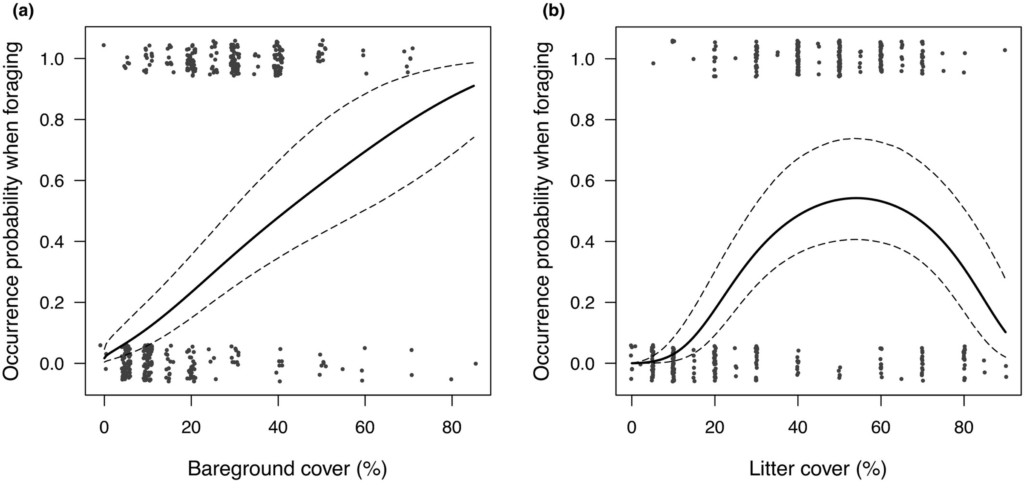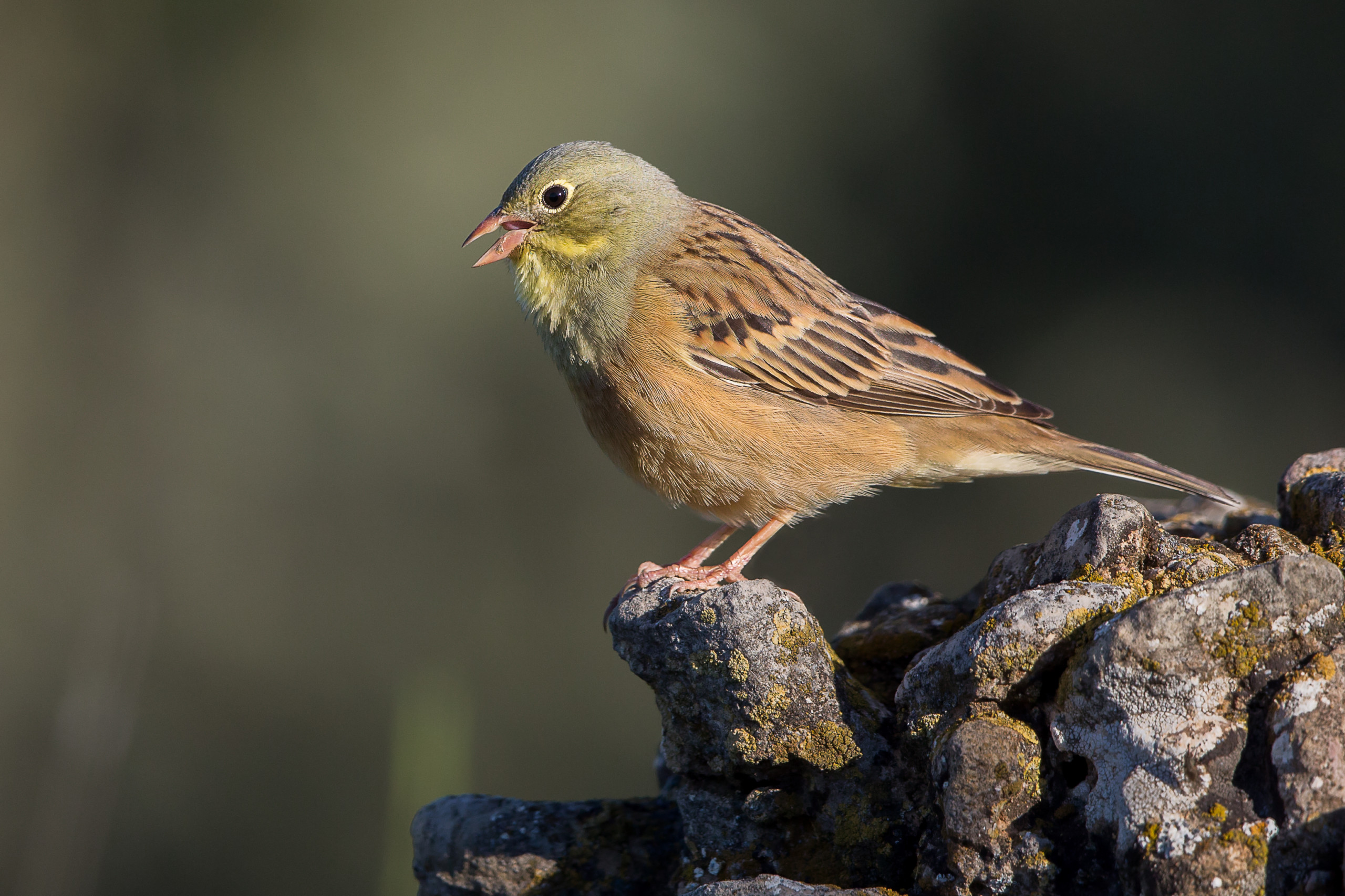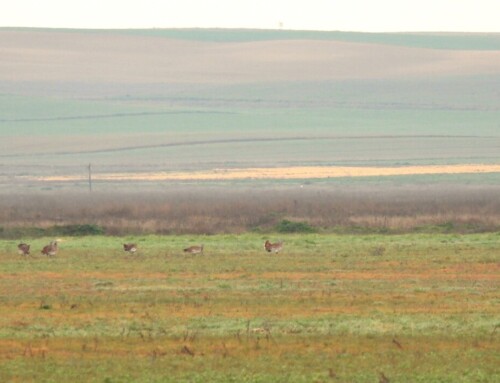
LINKED PAPER
Habitat preferences of the Ortolan Bunting (Emberiza hortulana) in its prime wintering grounds, the cereal-dominated Ethiopian Highlands. Gremion, J., Marcacci, G., Mazenauer, J., Sori, T., Kebede, F., Ewnetu, M., Christe, P., Arlettaz, R. & Jacot, A. 2022. IBIS. DOI: 10.1111/ibi.12992. VIEW
Did you know that 90% of the European population of Ortolan Buntings (Emberiza hortulana) spends its winters in Eritrea and Ethiopia (Jiguet et al., 2019)? These countries’ traditionally managed agricultural fields provide the buntings with plenty of food during their visits. However, these traditional landscapes are rapidly being replaced by large-scale and intensive agricultural systems that use more fertilizers and pesticides (Josephson et al., 2014). These changes are expected to reduce the abundance and diversity of farmland birds, such as the Ortolan Bunting (Marcacci et al., 2020). It is therefore important to understand how these birds forage on their wintering grounds. Do they prefer the traditionally managed fields or are they able to adapt to regions with intensive agriculture?
Radiotracking
Jérémy Gremion and his colleagues travelled to the Ethiopian highlands where they followed 12 male Ortolan Buntings with radio-transmitters. In addition, they walked 120 transects of 400 meters across the study area and noted down the locations of all the bird species they observed. The combined results from these two approaches provided insights into the habitat use of Ortolan Buntings in the agricultural fields of Ethiopia. It turned out that Ortolan Buntings prefer to forage in traditionally managed fields that are interspersed with semi-natural structures, such as hedges and trees. These structures might function as roosting sites or patches to escape from predators.

Figure 1. Ortolan Buntings prefer to forage on fields with patches of bare ground (figure a) and intermediate amounts of litter (figure b).
Stubbles
On a smaller scale, the Ortolan Buntings were often seen on fields that were recently harvested with a traditional method. Traditional harvesting leaves more grains in the fields compared to modern mechanical methods, providing the birds with plenty of food (Hassena et al. 2000). Within these fields, the buntings preferred patches of bare ground with intermediate amounts of litter (mostly stubble). The underlying reasons for this preference are probably manifold: the birds can move around more freely in comparison with dense vegetation, they can detect predators from a distance, and they can find more arthropod prey in the soil. Taken together, these findings highlight the importance of Ethiopian traditional agriculture for the Ortolan Bunting. Saving the stubbles might secure a future for the Ortolan Bunting and other farmland species (Vickery et al. 2014).
References
Hassena, M., Regassa, E., Mwangi, W.M. & Verkuijl, H. (2000). A Comparative Assessment of Combine Harvesting Vis-A-Vis Conventional Harvesting and Threshing in Arsi Region. Mexico City: CIMMYT. VIEW
Jiguet, F., Robert, A., Lorrillière, R., Hobson, K.A., Kardynal, K.J., Arlettaz, R., Bairlein, F., Belik, V., Bernardy, P., Copete, J.L. & Czajkowski, M.A. (2019). Unravelling migration connectivity reveals unsustainable hunting of the declining Ortolan Bunting. Science Advances 5: eaau2642. VIEW
Josephson, A.L., Ricker-Gilbert, J. & Florax, R.J.G.M. (2014). How does population density influence agricultural intensification and productivity? Evidence from Ethiopia. Food Policy 48: 142– 152. VIEW
Marcacci, G., Gremion, J., Mazenauer, J., Sori, T., Kebede, F., Ewnetu, M., Christe, P., Arlettaz, R. & Jacot, A. (2020). Large-scale versus small-scale agriculture: disentangling the relative effects of the farming system and semi-natural habitats on birds’ habitat preferences in the Ethiopian highlands. Agriculture, Ecosystems & Environment 289: 106737. VIEW
Vickery, J.A., Ewing, S.R., Smith, K.W., Pain, D.J., Bairlein, F., Škorpilová, J. & Gregory, R.D. (2014). The decline of Afro-Palaearctic migrants and an assessment of potential causes. Ibis 156: 1– 22. VIEW
Image credits
Top right: Ortolan Buntings (Emberiza hortulana) | Pierre Dalous | CC BY-SA 3.0 Wikimedia Commons
Blog posts express the views of the individual author(s) and not those of the BOU.
If you want to write about your research in #theBOUblog, then please see here





